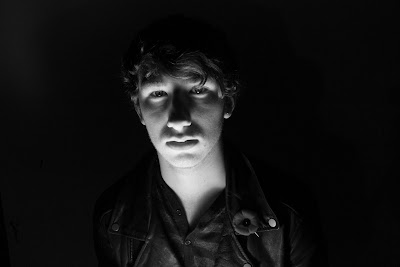The process of silk screening is quite unique; and in order to achieve my result, the materials I needed were fabric stapled tightly around a wooden frame, fabric paints, the canvas bags, and something to spread the paint across the fabric.
This was my test silk screen. I used block paint for this paper tester which is washable, unlike the fabric paint I used on top of the canvas bags.
These three silk-screened canvas bags were my final marketable product. I enjoy the distinct and bright colours, don't you?
For the last type of media, I did a silk screen of a photograph I shot of a front-angle view of a bicycle in Stratford, Ontario. I am intrigued by and love everything about bicycles, from their practicality, beautiful complexity, and how amazing they are of a method of transportation due to its amazing environmental impact, so I was inspired as soon as a saw this vintage bike downtown. Immediately after capturing this photograph, I knew I needed to do something with it. I'm ecstatic I decided to do a silk screen of this photo, both inverted and normal.
This process is by far the longest and most complicated process I have ever tried in photography; however, it is also the most rewarding. After deciding I wanted to use the photo of the bike for one of my three mediums, at first I chose to do a cyanotype. However, conditions like poor weather and lack of sunlight failed to provide me withany successful results. That is when I made the decision to make a silk screen rather than a cyanotype. For an interesting spin on the silk screen, I used the acetate of the inverted image that I would have used for the cyanotype, but also burned the non-inverted acetate into the silk screen as well. After vigorously scrubbing the silk screen with water and a sponge, I was ready to start seeing my results. On my first tester, I used the normal acetate as the black base, and then applied the inverted image in a different colour on top of the normal one (2nd image). I was thrilled with the results, and continued on doing the exact same technique for all three canvas bags, which I feel turned out to be an extremely successful and creative product.
I chose to use this media as my marketable item for a couple significant reasons. Firstly, I really love the photo of the bike. I decided to explore the theme of environmental consciousness and awareness, for its something I have been extremely passionate about since I can remember, and what better way to showcase my photograph than on reusable, recycled cloth bags, which implement the notion of reduce, reuse, recycle, just as the option of a bike over a car does. These bags can be used as reusable grocery shopping bags, a tote for the beach, and many more!
I shot the original photograph of the bike (below) with a Canon Rebel T2i with an 18-55 mm lens, with an aperture of f10 and a shutter speed of 1/80 of a second.

















